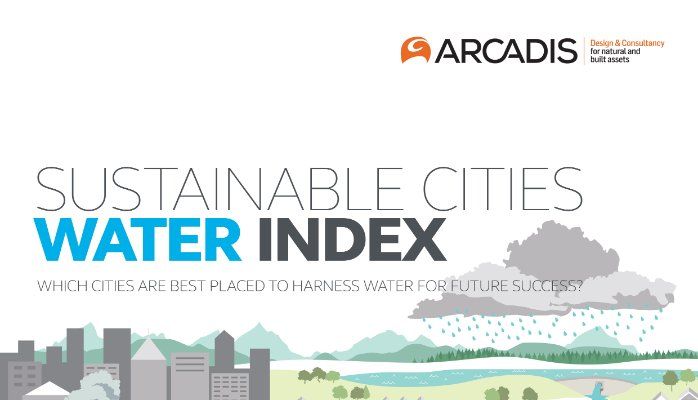Sustainable Cities Water Index 2016
Published on by Dusko Balenovic, Previous Network Manager at The Water Network in Government
CITIES: WATER HUBS

Great cities are defined and illuminated by the water that surrounds them or flows through them. Be it the harbors of New York, the river estuaries of London, the Amsterdam canals, the waterfronts of Doha or the beaches of Sydney, water is what gives a city its unique magnetism and attraction factor.
Cities are rarely spontaneous creations. They are often strategic settlements grounded by access to water and linked by transportation, trade and commerce. The historical positioning of cities proximate to fresh and navigable waters enabled settlements to flourish, grow and prosper.
Now more than ever, cities, their waterscapes and water sources face challenges: water demand is rising, aquifers are being depleted and the threat of extreme weather is increasingly real. The right balance is a tough one to strike; cities can be overburdened with too much water or stressed without enough.
Urbanization causes further demand for drinking water as well as sanitation and the need for additional water sources, while increasing impermeable areas that can contribute to flooding. Cities are responsible for protecting their citizens from pollutants, disease and destructive storm surges. Many are struggling and many more are vulnerable. Cities which carefully and creatively use their water assets for strategic urban advantage will ultimately be more livable, safe and competitive.
Cities that are truly distinguished by a thriving relationship with their waterscape can make a huge contribution to the quality of life of their residents, attract tourism and investment. Hungarian physiologist and Nobel Prize winner Albert Szent-Gyorgyi famously said ‘water, the hub of life’. So, too, cities are renowned for being hubs of knowledge, art and commerce that can further enrich and inspire as they leverage their position as water hubs.
The World Economic Forum named water crises as one of the top three highest global risks to economies, environments and people, in terms of impact in 2016. Water demand issues and climate change risks are happening right here and right now. The cities that best understand this and act first will be the ones that not only help save the planet from an impending water crisis, but will also be the first to attract investment and improve their competitive position.
This report seeks to expand on our annual Sustainable Cities Index to focus solely on water and identify which city is harnessing its water assets to its greatest long term advantage. It is our hope that city leaders find this ranking to be a valuable tool in helping them to think of water as an opportunity and as a resource for economic development while also meeting the critical needs and safety of their residents and the environment.
John Batten Global
Director of Water and Cities
Source: Arcadis
Taxonomy
- Technology
- Integrated Urban Water Management
- Smart City
- Water Supply
- Integrated Infrastructure
- Development Cooperation
- Eco-City Development
- City
- Urban Design